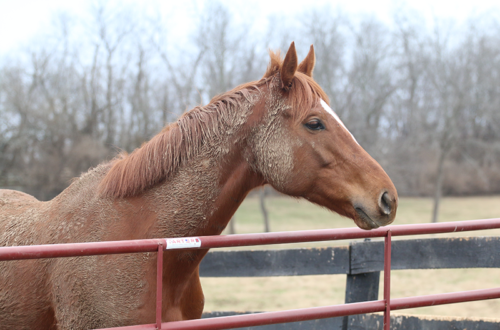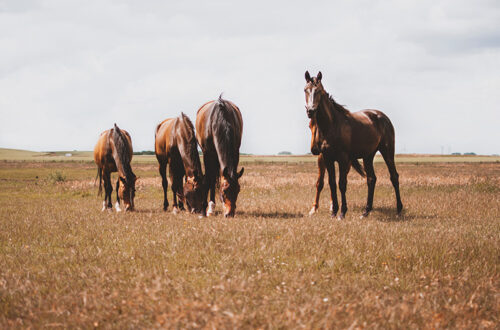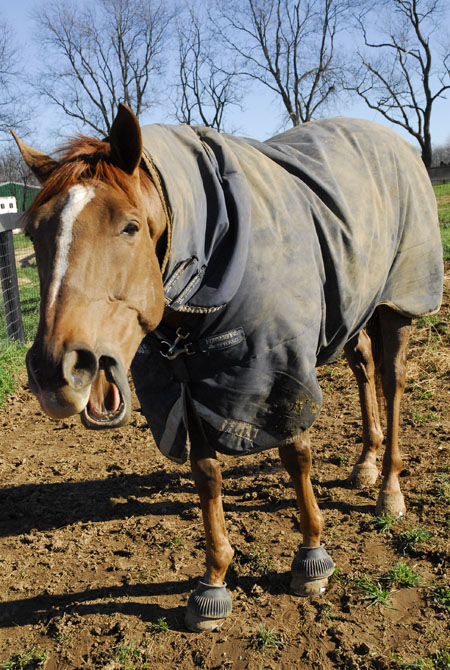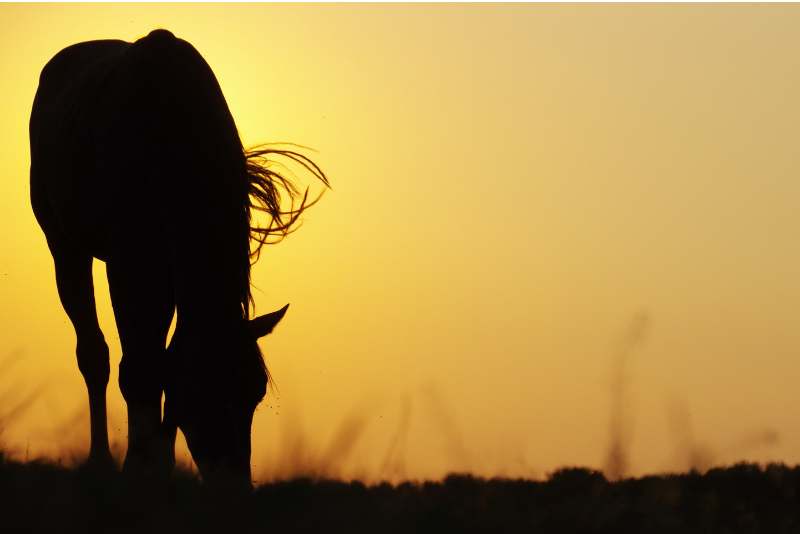
Hot Weather Horse Care
By Meg Finn, USPC Instruction and Testing Coordinator
All winter long, we dream of sunny skies and warmer temps. When they finally do arrive, we’re soon longing for those cooler days to return. While most of us look forward to the endless days of summer, the season presents its own set of challenges. Keeping horses, and riders, healthy in hot weather is critical for everyone’s well-being and performance. With proper care, attention to detail, and a few helpful tips, you can help keep everyone comfortable and healthy.
Hydration for Horses and Humans
A general guideline for horses is that a healthy horse needs one gallon of water for every 100 pounds of body weight every day, and clean, fresh water should always be available. Water needs may vary depending on workload, pregnancy or lactation for mares, and health conditions.
During hot weather, hydration is essential. Water helps regulate body temperature and plays a vital role in digestion and other bodily functions. Check, clean, and fill a horse’s water source (e.g., bucket, tank) on a regular basis several times per day, as needed.
During a heat wave, you may want to do this more than once a day. You can also wet down his hay or add some extra water to his feed. Make a cold treat by freezing watermelon pieces (without the rind, which is harder for horses to digest); sugar-free applesauce; or diluted sugar-free apple juice into popsicle molds or ice cube trays and add them to his feed or water bucket.
For riders: Don’t forget to keep a water bottle handy for yourself. Leave a water bottle on the fence or mounting block and take sips during breaks. If you’re thirsty, there’s a good chance your horse is, too.
Add Electrolytes
Electrolytes are responsible for keeping cells hydrated; without them, cells can’t survive. If your horse sweats heavily due to heat or exercise, consider adding electrolytes to help him replenish lost minerals before he becomes dehydrated and loses electrolytes. In horses, dehydration and loss of electrolytes are linked together. Horses already need access to a salt or mineral block, but you can also add an electrolyte supplement to his feed during hot weather.
For riders: As you take care of your horse, take care of yourself. Bring electrolytes or a sports drink to the barn for yourself.
Keeping Cool in the Saddle
When possible, schedule your ride time for early in the morning or later in the evening during the cooler parts of the day. The hottest time of the day is typically between 3 p.m. and 6 p.m. Adjust your training sessions to include more walking instead of strenuous riding and/or go for a hack in a wooded area or along a shady tree line. Wear appropriate, breathable clothing. While boots and helmets are non-negotiable when getting on your horse, riding apparel has evolved and improved greatly over the last decade to provide for cooler wear. Take advantage of vented helmets, riding tights, and sun shirts.
Cooling Out Clues
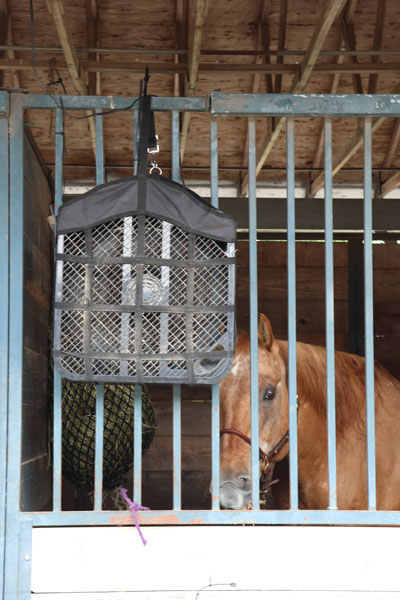
Finish every ride by walking the horse (either under saddle or by hand) for at least 10 to 15 minutes. This allows the horse’s body temperature to return to normal and can help prevent sore muscles and other injuries.
A horse loses water just like we do when we exercise by sweating. It’s important to offer water after exercise. Hosing or sponging with water can also help cool down a horse after a hard ride, especially in hot or humid weather. The cool water helps absorb the body heat. Remove the excess water with a sweat scraper, reapply, and repeat.
In severe conditions, where a horse is in danger of overheating, use cold water with ice or rubbing alcohol (diluted in water) to help him cool faster. Never cover a horse in hot weather with a cooler or an anti-sweat sheet, because both of these would hold the heat in and not allow the horse to cool down quickly.
As you are hosing or sponging your horse off, pay special attention to areas that tend to get sweaty, including his chest, neck, back, belly area, and between his hind legs. A small sponge can be used on the horse’s face and behind the ears, or anywhere the bridle touches the face. Once he is dry, groom those areas carefully to make sure all sweat has been removed.
How do you know that your horse’s body is back to normal?
- Notice his nostrils: Are they flared out? Is he breathing rapidly? When cooled out, the horse’s breathing will appear normal.
- Feel his chest area: Is it sweaty or hot to the touch? Touching a horse’s chest will help you determine if he is still warm and needs more time to return to normal temperature.
Once these two areas return to normal, you know your horse is safely cooled out. Depending on how sweaty he is, you may need to wash him. Remember horses should always be put away cool, dry, clean, and comfortable after every ride.
Beat the Heat in the Barn
Provide access to shade for your horse. Whether it’s trees, run-in shelters, or portable shade structures, horses need to be able to escape the direct sunlight, especially since some can also be prone to sunburn, and rest in cooler areas. If there is limited shade available, reduce the amount of time your horse is outside.
Nighttime turnout is a popular summer option due to cooler temperatures. If your horse is stabled during the day, keep the stalls and aisle clean to cut down on dust and air pollutants, and you can even spray down dusty areas, such as an aisle, to help with this. Also, keep air flowing, as ventilation is key. A properly and safely fastened stall fan can help your horse stay cool and comfortable inside. Keep cords and the fan itself out of reach of the horse. Check fans and fan cords periodically for wear, as worn-out or exposed electrical wiring is a fire hazard.
Summer Grooming
There are many benefits to grooming. Grooming not only helps remove loose hair and dirt; it also increases blood flow, which can improve circulation and promote cooling. A grooming session is also the ideal time to implement fly control. Finish off with some fly spray; cover those sensitive pink noses with sunscreen; and add a fly mask, fly sheet, or fly boots.
Does your horse naturally have a thicker coat? Not all horses shed out their winter coats due to age or health reasons. While a horse’s coat can protect from the sun, it also tends to hold the heat in and make it difficult for him to cool down. Body clipping isn’t just for the winter. Your fuzzy horse may need a summer haircut.
Avoid Heat Stress
Heat stress in humans and horses can happen very quickly, and the signs are similar in both humans and equine. Excessive sweating, rapid breathing, weakness, loss of appetite, and lethargy are just a few of the signs of heat illness. Stop any activity immediately if you are your horse show any signs of heat illness or dehydration.
Dangers of Dehydration
Excessive sweating, diarrhea, or failing to take in enough water are the main causes of dehydration in horses. Dehydration is serious because sufficient water is essential for vital functions, such as circulation of the blood, digestion, cooling, and cell maintenance.
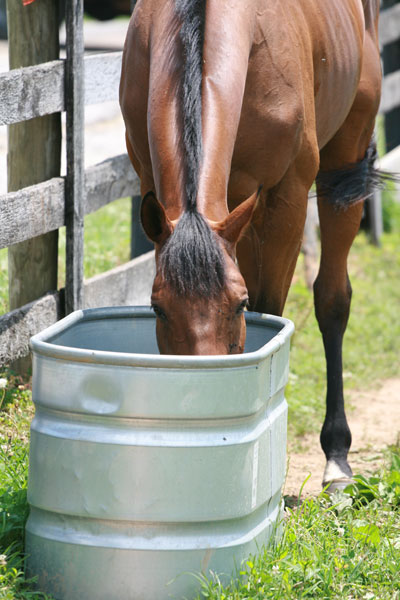
A simple hydration skin pinch test can be done to roughly estimate if a horse is possibly dehydrated. Perform a skin pinch test by pinching some neck tissue and releasing it to watch how quickly it returns to normal. If the skin does not quickly return to normal, then the horse might be dehydrated. You must also evaluate the horse’s gums for color (gums should be pinkish and not white) and capillary refill time, which is the time it takes for gums to turn back to pink from white after pressing on them (normal is 1-2 seconds). Other signs of dehydration can be hard, dry manure, slow digestion, impaction, and colic.
If you suspect that your horse is dehydrated, then encourage him to drink. Offering a bucket with electrolytes in addition to a normal bucket of water or adding 2-4 tablespoons of table salt on grain or hay might help encourage him to drink.
Calling your veterinarian to discuss your horse’s clinical signs if they do not improve would be wise as the vet might need to give the horse intravenous fluids to boost his hydration level.
When is it too hot to ride? Check the heat index for the day. The heat index is a measure of temperature and humidity. When the heat index is at 120 (92 degrees and humidity of 80), horses will have a hard time cooling themselves down naturally, which is why repeated sponging and walking is necessary. When the heat index is 130 or higher, horses should not be worked at all, as they cannot regulate their body temperature and may become dangerously overheated.
Be aware of the risks, know the signs of dehydration and heat illness for both riders and horses, and take proactive measures to keep you and your horse healthy in the summer heat.



